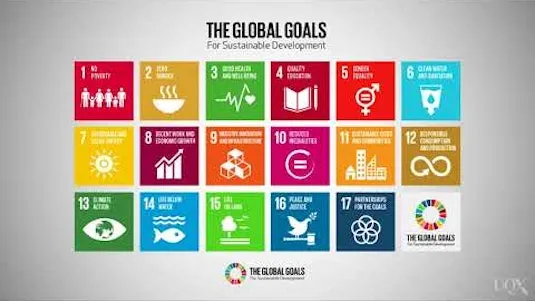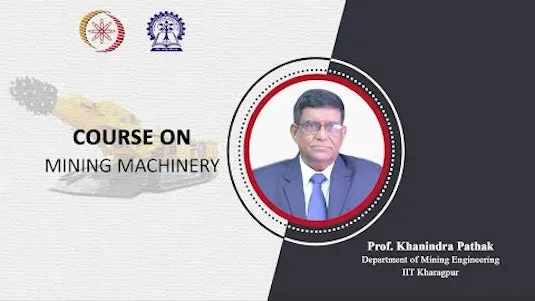
Eocene I - Clockwise Rotation w& Basil Tikoff 
Basil Tikoff's lecture on Eocene I explores the clockwise rotation of the Yakima Fold and Thrust Belt in Western Washington. He explains the reverse faults of Siletzia Basalt and the horseshoe shape of the Old and New Cascades. He then presents two models for the Cascades, an old one and a new one, and explains the differences between them. ▼
ADVERTISEMENT
Course Feature
![]() Cost:
Cost:
Free
![]() Provider:
Provider:
Youtube
![]() Certificate:
Certificate:
Paid Certification
![]() Language:
Language:
English
![]() Start Date:
Start Date:
On-Demand
Course Overview
❗The content presented here is sourced directly from Youtube platform. For comprehensive course details, including enrollment information, simply click on the 'Go to class' link on our website.
Updated in [February 21st, 2023]
Eocene I - Clockwise Rotation w& Basil Tikoff is an online course that explores the clockwise rotation of the Earth during the Eocene period. It is led by renowned geologist Basil Tikoff and covers topics such as the Yakima Fold and Thrust Belt, Western WA Reverse Faults, Siletzia Basalt Horseshoe Shape, Old and New Cascades, Old Model for the Cascades, New Model for the Cascades, and more. Learners will gain an understanding of the geological processes that led to the rotation, the pivot point, and the driving forces behind the rotation. They will also explore the Laurentia, North America Craton vs Accretions, Blue Mountains Rotation, and North America - West Coast Rotation. The course will also discuss how the older rotation can provide insight into what the plates were doing offshore. This course is ideal for those interested in Earth Science, Paleontology, and Fossils.
[Applications]
After taking this course, students should be able to apply the knowledge they have gained to better understand the clockwise rotation in WA, the Yakima Fold and Thrust Belt, the Western WA Reverse Faults, the Siletzia Basalt Horseshoe Shape, the Old and New Cascades, the Old Model for the Cascades, the New Model for the Cascades, and the theories of Basil Tikoff. They should also be able to answer questions such as how far back does the rotation go, what caused the rotation, where is the pivot point, what is driving the rotations, and can the older rotation say something about what the plates were doing offshore.
[Career Paths]
1. Geologist: Geologists study the Earth's physical structure and composition, its history, and the processes that shape it. They use their knowledge to explore for and develop natural resources, such as minerals, oil, and natural gas. Geologists are also involved in environmental protection and conservation, as well as in the management of natural hazards. The demand for geologists is expected to grow in the coming years due to the increasing need for energy resources and the need to protect the environment.
2. Petroleum Engineer: Petroleum engineers design and develop methods for extracting oil and gas from deposits below the Earth's surface. They also develop new technologies to improve the efficiency of oil and gas production. Petroleum engineers are in high demand due to the increasing demand for energy resources.
3. Geophysicist: Geophysicists use physical principles to study the Earth's structure and composition. They use seismic, gravity, magnetic, and electrical methods to map the Earth's interior and to study the Earth's magnetic and gravitational fields. Geophysicists are in high demand due to the need to explore for and develop natural resources, as well as to monitor and mitigate natural hazards.
4. Environmental Scientist: Environmental scientists study the environment and the effects of human activities on it. They use their knowledge to develop strategies to protect the environment and to mitigate the effects of climate change. Environmental scientists are in high demand due to the increasing need to protect the environment and to develop sustainable solutions to environmental problems.
[Education Paths]
1. Geology: Geology is the study of the Earth, its composition, structure, and history. It is a field of science that is constantly evolving as new technologies and discoveries are made. Developing trends in geology include the use of remote sensing and satellite imagery to map and study the Earth's surface, as well as the use of computer models to simulate geological processes.
2. Geophysics: Geophysics is the study of the physical properties of the Earth, such as its gravity, magnetic fields, and seismic activity. Developing trends in geophysics include the use of advanced imaging techniques to map the Earth's interior, as well as the use of computer models to simulate geological processes.
3. Geochemistry: Geochemistry is the study of the chemical composition of the Earth and its environment. Developing trends in geochemistry include the use of advanced analytical techniques to study the composition of rocks and minerals, as well as the use of computer models to simulate chemical processes.
4. Petroleum Engineering: Petroleum engineering is the study of the extraction and production of oil and gas. Developing trends in petroleum engineering include the use of advanced drilling techniques to access oil and gas reserves, as well as the use of computer models to simulate production processes.
Course Provider

Provider Youtube's Stats at AZClass
Discussion and Reviews
0.0 (Based on 0 reviews)
Explore Similar Online Courses

Detecting Facial Keypoints with Deep Learning a very simple top 5 kaggle solution

Filmora X: COMPLETE Tutorial for Beginners!

Python for Informatics: Exploring Information

Social Network Analysis

Introduction to Systematic Review and Meta-Analysis

The Analytics Edge

DCO042 - Python For Informatics

Causal Diagrams: Draw Your Assumptions Before Your Conclusions

Whole genome sequencing of bacterial genomes - tools and applications

Mining Engineering

The Future of Mining?


Start your review of Eocene I - Clockwise Rotation w& Basil Tikoff